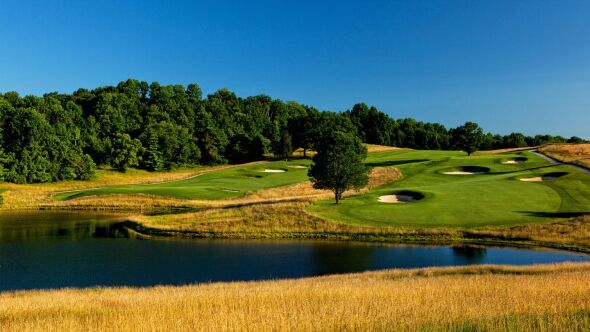Over the years I’ve found a number of ways in which golfers can pick up their pace of play without really pressing.
Goodness knows, I’ve seen a lot of slow play. For one thing, I’m basically impatient by character – the product, let’s stay of growing up in New York City, and of spending a summer driving a taxicab – back in the days before Uber, when every fraction of a minute was metered.
I also spent my high school summers as a caddie at a private club, where it became easy to get impatient over golfers who dawdled forever. That sense of urgency has carried over into my current role as a volunteer member of a municipal course management committee, where the difference between average rounds of 4:15 and 4:30 means a lot in terms of golfer satisfaction and facility reputation.
Not that I’m an advocate of playing fast for its own sake. I’ve seen far too many golfers who seem more intent on finishing a round in two hours so they can get on to the next course of their itinerary that day. It’s almost as if they’re goal is to play a golf course as fast as possible rather than enjoy the one they are on.
Still, there are some habits that golfers of any skill level can adopt that will help move things along without disrupting their own time equilibrium.
1. If riding in a cart and being confined to a cart path, bracket the likely clubs you are going to hit by taking three or four of them in hand. The same holds for when you park by the tee of a par 3 and have to walk up to the hitting area.
2. Forget about getting exact yardage to the hole and just play to the front-center of every green. Most mid- and high-handicappers would help their game and score lower if they threw away the pin sheet and just played for fattest part of the green, thereby maximizing their margin of error upon approach. By shooting at holes cut around the edge they bring bunkers into play or threaten to go long, leaving them very tough and time-consuming recovery shots. Here's one of many occasions where playing for pace of play helps you score better.
3. Don’t stick to the formula of letting the away player hit first. Be prepared at times to “hit out of turn,” if needed, when far enough away from the hole and ready to play when your partner is not ready. If you’re playing a match, agree beforehand to do this, especially on approach shots to greens if someone else in the group is looking for a ball or taking too much time.

4. Save the long stories and jokes for the walk off from tee shots rather than stalling everyone before you’ve hit your tee shots.
5. When in doubt, or even if there’s a slight question, hit a provisional. Stroke and distance for out-of-bounds or lost ball is an oppressive rule that unduly punishes players who are already struggling. But it’s the rules of golf. Unless, of course, you make it clear before hand that you are playing by more relaxed standards – which is perfectly fine. Sorry, USGA, but on this one I empathize with the average golfer. In any case, avoid the ultimate time killer of abandoning a ball search and going back to play from the original spot. Play a provisional – or play by a more relaxed standard.
6. Start assessing a shot as you approach the ball, and don’t wait until you get there. This is especially important if you depend upon cart-borne screen yardage or fixed markers on the course. But it also holds true for walking towards a green and assessing the lay of the land of your putt. You’ll play better and get more accurate reads if you look at the big movements of the terrain before you study the smaller landforms internal to the putting surface.
7. Don’t try to make putts over 20 feet. Just try to get those within a comfortable two-foot circle of the hole. And if you do hit it past the hole, watch the “through break” on the other side as a good indication of basic direction – though knowing it’s not foolproof, because some of the break you see is the outflow from the much longer putt you just had from the other side.
8. Finally, and more important, play from a distance that’s suitable to your game – which usually is about 300 yards shorter than you think it is. The first time you play a course move up one set of markers than you think at first is appropriate. You can always move back once you’ve established your skill by registering a score of net par or better. For average drives of 220 yards you should be playing a course under 6,300 yards. If your swing speed is 80 miles per hour and you hit it 180 you should be playing at 5,800 yards. Save the “play it like the pros tees” at 7,000 yards for those who play like pros – which means swing speeds of 110+ miles per hour, average drives carrying 270+ yards, and 7-irons that fly 170+ yards. Pros don’t play a 440-yard par-4 by hitting driver, 4-wood, full pitching wedge.
Years ago I was managing a very big group through a 36-hole-day of a four-day road trip. A newcomer was slowing everyone down, making it evident we’d struggle to get both rounds in. After nine holes in which he caused his group to lag I approached him at the turn and told him he had to speed up. “But I have a very a very deliberate routine,” he said. My answer was simple. “Then change it.”
How you handle your swing is for you to figure out. But there’s enough adjusting in how you go about getting around the shots you play that a group can easily save 15-20 minutes a round by adjusting as indicated above.












Best way to golf faster, cheaper and with less difficulty/frustration...use the new alternative ”Hybrid” MD golf ball developed for the full golf game on smaller courses. Enhances the game while providing the same golf experience in 1/2 the time.
Go ahead and putt out after you putted and what don't worry if you step in another's line?? Golf is played by many older players and different size players. Some walk slower just because. It came take more time Inna foursome if you have one golfer on championship tees.. two on white..one on ladies or intermediate and say one golfer weighs 300 lbs and walks slower. Golf is alot like baseball. They start an automatic walk for batters that you don't want to pitch to.. but then the next batter fouls off 12 pitches so where was the time saved?
Whoever made these play saving rules is a moron. Dont try to make a 20 foot putt? Whatever
For the player who doesn't believe he plays slower than others, I suggest he counts seconds it takes him to hit vs his playing partners. Time it from the time the tee goes in the ground to the time the club strikes the ball. Same thing when he walks up to the ball in the fairway and when he first surveys his line on the greens.
Put your glove on before you arrive at the tee.
Leave the head cover from your driver and putter in the car.
No more than one practice swing.
Walk a bit quicker to your ball.
Record your score when you are not holding up play.
I have recently started playing with a senior men's group on Wednesday mornings. Not sure how much longer I will be able to tolerate it. I am just inside the age limit and quite frankly, not a very good golfer, but I was taught how to play fast by my father and have lived by those tenets. On Wednesday mornings, rounds easily go 5 hours and sometimes more. Most of the guys are retired, but I am not and schedule work around playing. When I get off the course at 2:00, that pretty much killed the whole day so I do not go often.
The killers as I see them.
1) Marking balls. If your ball is not in anyone's way, leave the damn thing alone. The foursome easily loses 2-3 minutes per hole while yahoos fiddle with marking and resetting their balls.
2) Nobody has to hold the pin. Pull it and toss it aside so you can...
3) Line up your putt WHILE others are putting. I want to scream when I see guys leaning on their putters watching someone else putt whose line has nothing to do with yours. If you are out, you should be addressing your ball before the other one has stopped rolling.
4) Throw away your range finder. You have played this course 100 times. If you do not know how far it is from where you are at, a range finder is not going to help. Especially when your longest fairway club is going to get you no more than 200 yards, why did you feel the need to scope it when it is clear you are well over 200 out???
5) Cannot agree with #3 any more enthusiastically.
Here's another.
If you're last off the tee, and everyone is waiting on you, in their carts, carry your club with you and put it in the bag when you select your club for your next shot, or when stopping for your playing partner's shot.
A round can be shortened by as much as 15 minutes if all players putt out once they've hit their first putt. Also, hitting second shots more or less simultaneously saves an additional 15 minutes. (Exceptions for players who are close to one another.) Following these two recommendations would bring rounds down to four hours or less.
A lot of good suggestions below. One I would add is to walk with a bit of purpose. Not full out race walking, but you are headed to your next shot. Not the gallows. Also plan shots as you approach your ball. I also put my driver and putter headcovers in the bag at the start of the round. Another is after hitting a fairway wood replace that cover and club as you are walking to your next shot.
If you have a great long story, buy a round and tell it on the 19th. better chance to get a good laugh anyway.
I believe that the underlying, fundamental problem with slow rounds is lack of golfer etiquette, lack of consideration for those playing behind you.